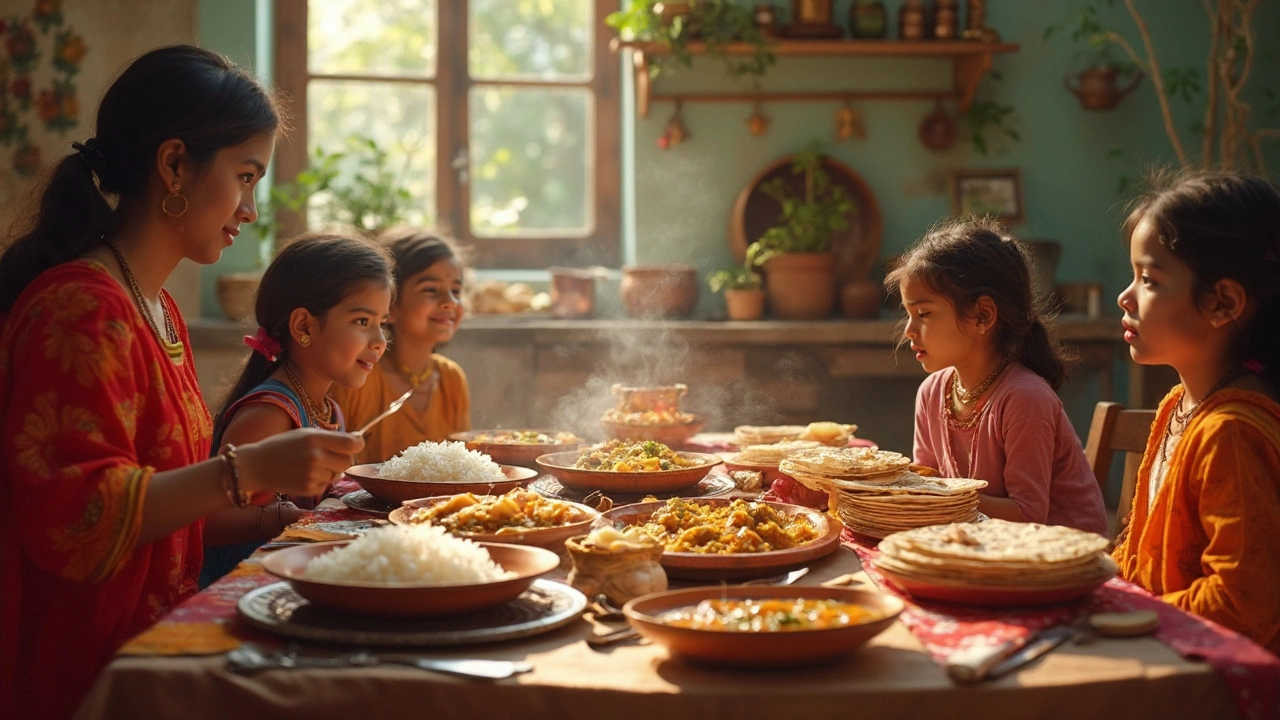Indian Cuisine Facts You Probably Didn’t Know
Indian food isn’t just about curry and naan. It’s a massive mix of flavors, techniques, and traditions that stretch across a sub‑continent. Want to surprise your friends at dinner? Below are some straight‑forward facts you can drop in conversation and even use in the kitchen.
Everyday Truths About Indian Food
First off, Indian meals are built around balance. Sweet, salty, sour, bitter and spicy should all have a role, which is why you’ll see a pinch of sugar in many savory dishes. The staple grain isn’t always rice – in the north wheat dominates, while south India leans on rice and millets like ragi and jowar.
Spices aren’t just for heat. Turmeric gives color and anti‑inflammatory benefits, cumin adds earthiness, and asafoetida (hing) helps with digestion. Most spice mixes, or masalas, are made fresh at home; store‑bought blends can lose potency after a few months.
Chutney isn’t a side dish, it’s a flavor booster. Whether you blend fresh cilantro, coconut, or roasted peanuts, chutney adds the bright, tangy kick that ties a meal together. In many homes they make a small batch daily, adjusting the thickness by cooking with the lid on or off – a trick that avoids splatter and gives the right consistency.
India’s love for sweets isn’t a myth. From the oldest known mithai – a simple jaggery‑based bar – to modern gulab jamun, desserts often have cultural meanings. For example, laddus are shared during festivals because their round shape symbolizes completeness.
Fun Trivia to Impress Your Friends
Did you know that “dal” isn’t a single dish? It’s a family of lentil soups, each region has its own version, and in the US many people just call it “lentils”. The same goes for “biryani”. It’s not just a single recipe; it varies by city – Hyderabad’s version is spicy and tomato‑rich, while Kolkata’s uses potatoes and boiled eggs.
Tandoori chicken is often thought of as deep‑fried, but the authentic method is grilling in a clay oven called a tandoor. The high heat cooks the meat quickly, sealing in juices and giving that smoky char.
Street food isn’t random. The most popular snack in India is pani‑puri – a small, hollow crisp filled with flavored water, potatoes, and chickpeas. It’s sold in every corner, and each vendor adds their own secret spice blend.
Finally, the word “curry” is an oversimplification. In Indian kitchens the term refers to a specific style of gravy, not a blanket label for all dishes. Knowing the difference helps you pick the right recipe and avoid confusing flavors.
Keep these facts handy next time you cook or order Indian food. They’ll help you choose ingredients, tweak recipes, and chat knowledgeably about the culture behind every bite.
What is India's National Dish? The Truth About Vegetarian Indian Dishes
Is there really a national dish of India? A closer look reveals surprising facts behind the hype. This article unpacks what people think is India's national dish, why it's all vegetarian by default, and how food connects across the country's regions. Explore how everyday veggies like dal, rice, and aloo dominate the table, and get handy tips on trying these dishes at home. Forget the clichés—here's what Indian food really looks like at mealtime.
